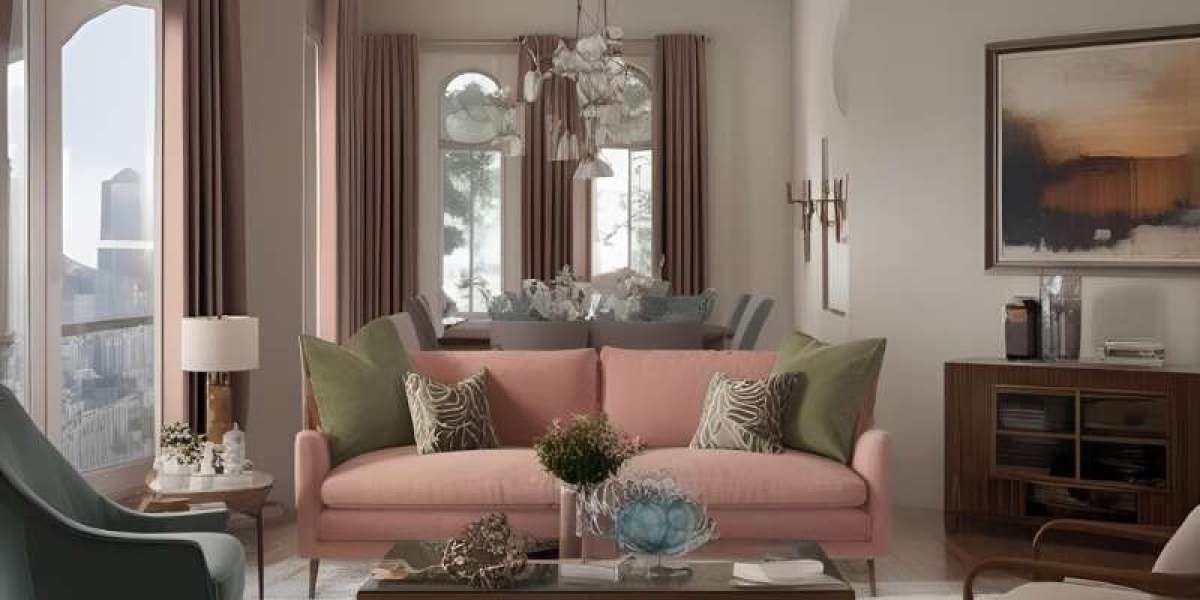In interior design, even the most well-thought-out concepts can fall short without careful attention to lighting and material selection. These two elements play a critical role in shaping the atmosphere, functionality, and aesthetic appeal of a space. However, visualizing how materials will interact with various lighting conditions can be a challenge, especially before any physical construction begins. This is where interior renderings come into play.
Interior renderings provide designers, architects, and clients with highly detailed and realistic visualizations of proposed spaces. These renderings act as a powerful decision-making tool by simulating both natural and artificial lighting, along with accurate textures and finishes of materials.
They allow stakeholders to preview how a space will look at different times of day, assess the impact of reflective surfaces, and make informed choices about colors, finishes, and fixtures. Ultimately, interior renderings bridge the gap between concept and reality, ensuring that every design element works harmoniously before implementation.
What Are Interior Renderings?
Interior renderings are computer-made images that show what the inside of a room or building will look like. These images are made using special software by designers, architects, or 3D artists. The goal is to help people see the final design before any real work is done.
An interior rendering shows many details like furniture, lighting, colors, flooring, wall textures, and decorations. It helps homeowners, designers, or clients understand the space better. They can see if the design matches their style and needs. Changes can be made easily before spending money on materials or construction.
There are different types of interior renderings. Some are simple 2D images, while others are 3D and look very real. The most advanced ones are photorealistic renderings, which can look like actual photos.
Interior renderings are used in many areas, like home design, office planning, hotel rooms, and even restaurants. They help save time, reduce mistakes, and improve communication between clients and designers.
The Role of Lighting in Interior Design
Lighting plays a big role in interior design. It not only helps us see clearly, but it also changes how a space looks and feels. Good lighting can make a room look bigger, warmer, or more welcoming. Poor lighting, on the other hand, can make even a beautiful room feel dull or uncomfortable.
There are three main types of lighting: ambient, task, and accent lighting. Ambient lighting is the main light in a room. It gives overall brightness. Task lighting helps us do specific things like reading, cooking, or working. Examples include desk lamps and kitchen lights. Accent lighting is used to highlight something special like a painting or a wall.
Natural light is also very important. Sunlight can make a room feel fresh and lively. Big windows and light-colored curtains can help bring more natural light inside.
The color of light matters, too. Warm lights create a cozy feeling, which is great for living rooms or bedrooms. Cool lights are better for areas where we need to focus, like study rooms or kitchens.
How Renderings Help with Lighting Choices
Choosing the right lighting is very important in any design project. It can change how a space feels, looks, and functions. Renderings make this process much easier. A rendering is a computer-made image that shows what a room or building will look like before it is built.
With renderings, designers and clients can see how different types of lighting, like natural light, ceiling lights, or lamps, will affect the space. For example, you can see how sunlight comes through windows during different times of the day. This helps decide where to place windows or if you need more artificial lighting.
You can also test different colors and brightness levels of light. Warm lighting creates a cozy feeling, while cool lighting looks more modern. Renderings help you see the difference and choose what suits the space best.
Renderings also help in avoiding mistakes. Without seeing how the lighting will look, people might choose fixtures or colors that don’t match the space. This can cost more time and money later.
The Impact of Material Choices on Interiors
Material choices play a big role in how an interior space looks, feels, and works. Whether it's a home, office, or shop, the materials used for floors, walls, furniture, and finishes affect both style and comfort.
For example, wood brings warmth and a natural feel. It is often used in floors and furniture to create a cozy and welcoming look. On the other hand, materials like glass or metal can make a space feel modern and clean.
Materials also affect how durable a space is. In high-traffic areas like kitchens or offices, strong and easy-to-clean materials like tiles or laminate are a smart choice. In living rooms or bedrooms, soft materials like fabric and carpet add comfort and reduce noise.
The color and texture of materials matter too. Light-colored materials can make a small room look bigger and brighter. Rough textures give a space character, while smooth surfaces offer a sleek and polished finish.
Even the environment is affected by material choices. Using eco-friendly or recycled materials can reduce harm to nature and support green building practices.
The End Note
Interior renderings play a vital role in modern interior design by bringing concepts to life before any physical work begins. They offer a powerful way to visualize how lighting and material choices will interact within a space, helping designers and clients make confident, informed decisions.
Whether it’s testing how natural light filters through a room or previewing how wood, metal, or fabric will look under various lighting conditions, renderings provide a realistic glimpse into the future design.
This not only improves design accuracy and client satisfaction but also saves time and costs by reducing the chances of errors or rework. In essence, interior renderings serve as a bridge between imagination and reality, ensuring that every element—light, texture, and color—comes together in harmony.







